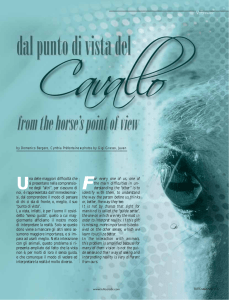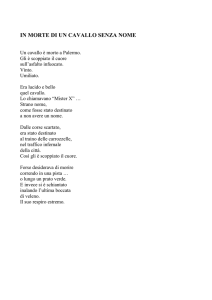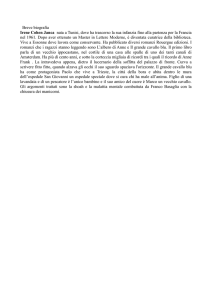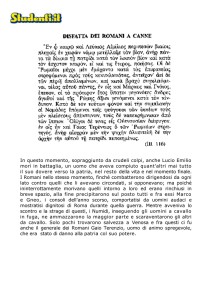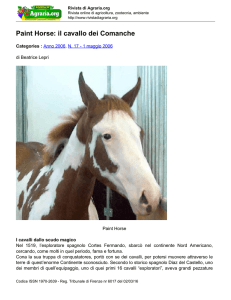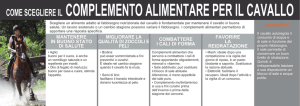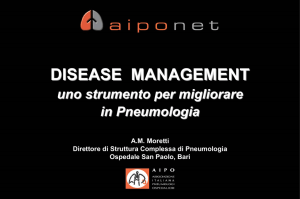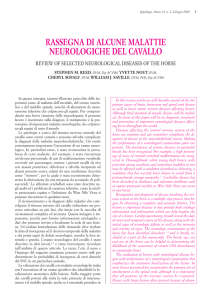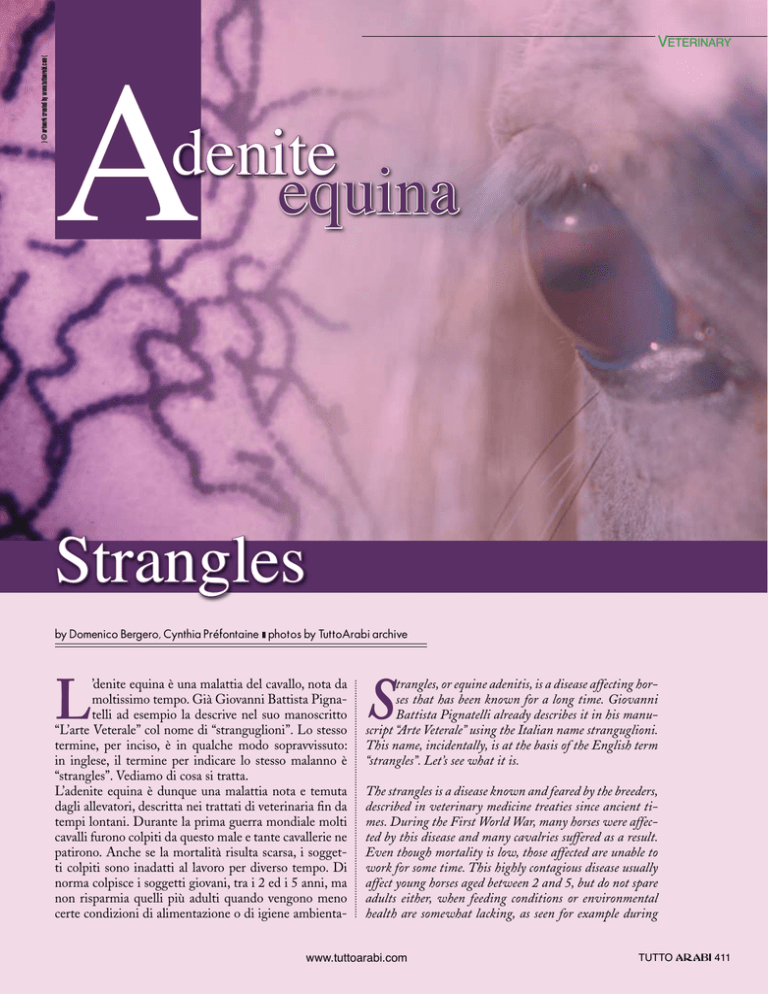
) © artwork created by www.tuttoarabi.com (
A
VETERINARY
denite
equina
Strangles
by Domenico Bergero, Cynthia Préfontaine z photos by TuttoArabi archive
L
’denite equina è una malattia del cavallo, nota da
moltissimo tempo. Già Giovanni Battista Pignatelli ad esempio la descrive nel suo manoscritto
“L’arte Veterale” col nome di “stranguglioni”. Lo stesso
termine, per inciso, è in qualche modo sopravvissuto:
in inglese, il termine per indicare lo stesso malanno è
“strangles”. Vediamo di cosa si tratta.
L’adenite equina è dunque una malattia nota e temuta
dagli allevatori, descritta nei trattati di veterinaria fin da
tempi lontani. Durante la prima guerra mondiale molti
cavalli furono colpiti da questo male e tante cavallerie ne
patirono. Anche se la mortalità risulta scarsa, i soggetti colpiti sono inadatti al lavoro per diverso tempo. Di
norma colpisce i soggetti giovani, tra i 2 ed i 5 anni, ma
non risparmia quelli più adulti quando vengono meno
certe condizioni di alimentazione o di igiene ambienta-
S
trangles, or equine adenitis, is a disease affecting horses that has been known for a long time. Giovanni
Battista Pignatelli already describes it in his manuscript “Arte Veterale” using the Italian name stranguglioni.
This name, incidentally, is at the basis of the English term
“strangles”. Let’s see what it is.
The strangles is a disease known and feared by the breeders,
described in veterinary medicine treaties since ancient times. During the First World War, many horses were affected by this disease and many cavalries suffered as a result.
Even though mortality is low, those affected are unable to
work for some time. This highly contagious disease usually
affect young horses aged between 2 and 5, but do not spare
adults either, when feeding conditions or environmental
health are somewhat lacking, as seen for example during
www.tuttoarabi.com
TUTTO ARABI 411
le, come si è visto ad esempio durante le guerre, trattandosi di una malattia infettiva altamente contagiosa. Un
autore ha scritto che la sua diffusione è rapida come il
fuoco in un bosco. La guarigione da un attacco di adenite conferisce al cavallo una immunità che si protrae per
tutto il corso della vita.
I primi sintomi di adenite possono ingannare perché sono
molto simili ad un comune raffreddore che causa stanchezza, inappetenza. Il soggetto appare intorpidito, privo
di vivacità e di interesse. All’inizio la temperatura corporea aumenta da 39,5° a 40,5°. Il polso è accelerato. Appare poi una fuoruscita di catarro dalle cavità nasali, ma
non sempre questo è un sintomo sicuro. All’inizio questo
scolo si presenta denso, di colore opaco, bianco giallastro.
Se palpiamo la testa dell’animale notiamo un gonfiore
caldo, diffuso e dolente, sotto la mandibola. A causa di
questo il cavallo ha male alla gola, la deglutizione, sia dei
cibi sia dei liquidi, diventa difficile. Un chiaro sintomo è
la posizione della testa tenuta rigidamente estesa. Dopo
poco tempo le ghiandole linfatiche della testa gonfiano
e si possono vedere nettamente, anche senza toccarle.
Le ghiandole maggiormente interessate sono quelle cosiddette intermandibolari, ma non ne sono esenti quelle presenti dietro la parotide e sotto le orecchie. Queste
ghiandole oltre ad ingrossare, diventano dolorose al tatto
e spesso si trasformano in ascessi. Non è raro il caso in cui
l’infiammazione delle ghiandole linfatiche si estenda oltre
la testa del cavallo ad altre parti del corpo. In questo caso
si parla di “adenite generalizzata”.
L’agente specifico di questa malattia altamente infettiva
è lo Streptococcus equi, scoperto e descritto per la prima volta da Schültz. In condizioni naturali la malattia
è disseminata, oltre che tramite il pus proveniente dagli ascessi e dallo scolo nasale, anche attraverso il cibo e
l’acqua contaminata da soggetti ammalati. Gli abbeveratoi costituiscono uno dei punti principali di possibile
Strangles
412 TUTTO ARABI
the wars. One author wrote that this disease spreads as
rapidly as a fire in a forest. Recovery from an attack of
strangles gives the horse immunity, which lasts throughout
their lives.
The first symptoms of strangles can be deceiving because
they are very similar to a common cold, causing fatigue and
loss of appetite. The horse appears numb, devoid of vitality
and interest. At first the body temperature increases from
39.5°C (103.1°F) to 40.5°C (104.9°F). The pulse is accelerated. Phlegm spills from the nasal cavity, but this is not
always a definite symptom. Initially this discharge is thick
and of an opaque yellowish-white color. If you touch the
animal’s head, you will feel a widespread warm and painful swelling under the jaw. Because of this, the horse has a
sore throat and swallowing food or liquid becomes difficult.
A clear symptom is the position of the head held rigidly
extended. After a short while, the lymph glands of the head
get swollen and become visible even without touching. The
glands mostly affected are the so-called intermandibular
ones, but those behind the parotid and below the ears can
also be involved. In addition to the swelling, these glands
become painful to the touch and often turn into abscesses.
It is not uncommon that the inflammation of the lymph
glands goes beyond the horse’s head and affects other parts
of the body. In this case, the term is “generalized adenitis”.
The specific agent of this highly infectious disease is the
streptococcus equi, discovered and described for the first
time by Schültz. Under natural conditions, the disease is
spread by the pus from the abscesses and the nasal discharge,
but also through food and water contaminated by infected
horses. Water troughs are one of the main points of possible
spread for the disease. One of the first measures to be taken
in case of strangles is to isolate the horse immediately to
prevent the spread of the disease. But this measure alone
is not enough, as the infection can be transmitted in other
ways. Staff clothes can be a transmission vehicle, not to
www.tuttoarabi.com
A
VETERINARY
denite
equina
diffusione della malattia. Uno dei primi provvedimenti
da adottarsi in caso di adenite consiste proprio nell’isolare immediatamente il soggetto ammalato per impedire la diffusione del male. Questo accorgimento non è
però sufficiente perché l’infezione può essere trasmessa
in altri modi. I vestiti del personale di scuderia possono
costituire una via di trasmissione, per non parlare degli strumenti di pulizia, oppure della stessa lettiera. La
pulizia e l’igiene in una scuderia non sono mai eccessive. Ogni cavallo, puledri inclusi, dovrebbe disporre di
propri strumenti, in particolare delle spugne. Gli asini,
contrariamente ai cavalli, sono meno colpiti da questa
malattia.
Il cavallo può contrarre la malattia anche durante un
viaggio, durante una semplice passeggiata o in un concorso venendo a contatto con un animale infetto o soggiornando in un locale contaminato. Il periodo di incubazione varia da due a quattordici giorni ed è proprio
in questo lasso di tempo che un cavallo può infettarne
altri. Anche durante la monta la cavalla incorre il rischio
di contrarre questa malattia dallo stallone infetto e viceversa.
Negli allevamenti l’infezione può colpire violentemente
ed improvvisamente i puledri anche attraverso l’ombelico ed essere seguita da
formazioni di ascessi e
poliartrite. I soggetti
apparentemente guariti
possono trasmettere ad
altri gli streptoccocchi
ancora per diversi mesi
all’insaputa dell’allevatore.
Le condizioni che maggiormente favoriscono
lo sviluppo della malattia e della sua diffusione sono determinate
mention the cleaning tools, or even litter. There can never
be too much cleaning and hygiene in stables. Every horse,
foals included, should have their own handling tools, especially sponges. Donkeys, unlike horses, are less affected by
this disease.
The horse can contract the disease during a trip, a simple
walk or at a competition, coming into contact with an infected animal or staying in a contaminated stable. The incubation period varies from two to fourteen days, and it is
precisely in this period of time that a horse can infect others.
Also during covering the horse incurs the risk of contracting
this disease from an infected stallion and vice versa.
In the studs, infections can strike violently and suddenly the
horses also through the navel, and is followed by a formation of abscesses and polyarthritis. Those horses that have
apparently recovered can still transmit the streptococcus to
others for several months, unbeknown to the breeder.
The conditions that favor the development and spreading
of the disease the most are cold and humid weather, a chill
and an overall weakness of the horse.
www.tuttoarabi.com
TUTTO ARABI 413
A
denite
equina
dal tempo freddo ed umido, dai raffreddamenti e da una
debolezza organica del soggetto.
In caso di adenite, il primo provvedimento consiste
nell’isolare il soggetto ammalato per evitare la diffusione
del contagio e porlo nelle migliori condizioni igieniche.
Bisogna mantenere il locale ben aerato e, nello stesso
tempo, mantenere il paziente al caldo coprendolo con una
coperta più o meno spessa secondo la stagione. Occorre
poi ricordarsi di non utilizzarla per altri cavalli prima di
averla adeguatamente lavata e dunque sterilizzata.
Il veterinario prescriverà le opportune medicine, spesso
antibiotici.
Il proprietario da parte sua presterà una attenzione maggiore riguardo l’alimentazione. Il cavallo, a causa del mal
di gola, tenderà a non mangiare, perché avrà dolore ad
inghiottire. Per aiutarlo si potranno preparare dei pastoni cotti o beveroni. Passata la febbre, se le condizioni
climatiche lo consentono, il cavallo può restare al prato,
sempre eventualmente protetto da una coperta, lontano
dagli altri .
Per favorire la maturazione degli ascessi si possono praticare localmente degli impacchi di acqua calda salata,
delle pomate o altri prodotti consigliati dal veterinario.
Quando questi ascessi saranno ben “maturi” il veterinario provvederà ad inciderli. Dopo questo intervento
ed il conseguente drenaggio del pus il cavallo si sentirà
certamente meglio e si avvierà verso la guarigione. Anche se apparentemente guarito il soggetto dovrà ancora
rimanere isolato per alcune settimane. Si curerà ancora
l’alimentazione, che dovrà essere ricca, per permettergli
di recuperare le forze.
Fortunatamente oggi la farmacologia mette a disposizione dei vaccini contro l’adenite. La loro efficacia però
non sempre è totale. In genere bisogna comunque tenere presente che occorrono diversi giorni, una quindicina dopo l’iniezione del vaccino, prima che l’animale sia
completamente immunizzato. q
In the case of strangles, the first step to be taken is to isolate
the infected horse, to prevent the infection from spreading,
and accommodate the animal in the best hygienic conditions. It is necessary to keep the stable well ventilated and
the horse warm by covering it with a more or less thick
blanket, depending on the season. The blanket must not be
used for other horses, before it has been properly cleaned and
sterilized. The veterinarian will prescribe the appropriate
medications, often antibiotics.
The owner will have to pay more attention to the food.
Because of the sore throat, the horse tends not to eat as the
swallowing is painful. In order to help the horse, food can
be cooked or mashed. Once the fever has gone, if conditions
permit, the horse can remain in the lawn, always protected
by a blanket and away from the others.
To stimulate the maturation of abscesses, you can apply
compresses of warm salt water, creams or other products
recommended by your veterinarian. When these abscesses
are “mature”, the veterinarian will lance them. After this
surgical procedure and the subsequent drainage of pus, the
horse will feel better and will certainly be on the way to
recovery. Though apparently recovered, the horse must still
remain isolated for a few weeks. Rich food will help with
the recovery, so the horse can get its forces back.
Fortunately, today there are also vaccines against strangles.
Their effectiveness, however, is not always total. Generally, we must be mindful that it takes several days, even a
fortnight, after the injection of the vaccine before the animal is fully immunized. q
Strangles
414 TUTTO ARABI
www.tuttoarabi.com

